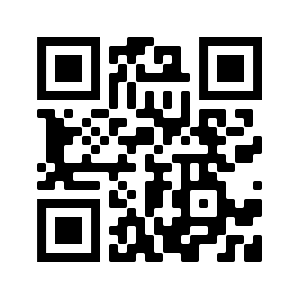Antibacterial Activity of Chayote (Sechium edule Swartz) Squash Extracts and Their Phytochemical Constituents
Abstract
Antibacterial activity of chayote (Sechium edule Swartz) squash extracts against pathogenic bacteria has been evaluated. Dried chayote squash powder was extracted using methanol which was then extracted successively using hexane, chloroform, ethyl acetate, and butanol. The antibacterial activities of the extracts were tested by the hole diffusion method. Methanol extract of chayote squash had antibacterial activity against Staphylococcus aureus, Bacillus subtilis, Pseudomonas aeruginosa, and Escherichia coli but did not have antibacterial activity against Enterobacter aerogenes, Shigella dysenteriae, and Salmonella typhi. Ethyl acetate extract had the highest antibacterial activity against P. aeruginosa and E. coli. The ethyl acetate extract contains phenolics, condensed tannins, flavonoids, and terpenoids. The ethyl acetate extract had a MIC of 50 mg/ml for S. aureus, B. subtilis, P. aeruginosa, and E. coli. Different bioactivities of tested extracts were found due to various chemical compositions of extracts as a result of different polarities of the solvent.
Full Text:
PDFReferences
- Tungmunnithum D. Thongboonyou A. Pholboon A. Yangsabai A. Flavonoids and other phenolic compounds from medicinal plants for pharmaceutical and medical aspects: an overview. Medicines (Basel). 2018;5(3):93.
- Tian-yangWang, QingLi, Kai-shun Bi. Bioactive flavonoids in medicinal plants: structure, activity and biological fate. Asian J. Pharm. Sci. 2018;13(1):12-23.
- Suryanti V. Kusumaningsih T. Marliyana SD. Setyono HA. Trisnawati EW. Identification of active compounds and antioxidant activity of teak (Tectona grandis) leaves. Biodiversitas. 2020;21(3):946-952.
- Suryanti V. Marliyana SD. Musmuallim. Identifikasi senyawa kimia dalam buah kundur (Benincasa hispida (Thunb) Cogn.) dengan Kromatografi Gas-Spektrometer Massa (KGSM). Alchemy Jurnal Penelitian Kimia. 2018;14(1):84-94.
- Suryanti V. Marliyana SD, Astuti IY. Chemical constituents of Luffa acutangula (L.) Roxb fruit. IOP Conf. Seri. Mater. Sci. Eng. 2017;193,012050.
- Rukmana R. Budidaya Labu Siam. Kanisius, Jakarta, 1998.
- Saade RL. Chayote, Sechium edule (Jacq.) Sw., Promoting the conservation and use of underutilized and neglected crops. 8. Institute of Plant Genetics and Crop Plant Research, Gatersleben/International Plant Genetic Resources Institute, Rome, Italy, 1996.
- Marliana, SD. Suryanti V. Suyono. Skrining fitokimia dan analisis kromatografi lapis tipis komponen kimia buah labu siam (Sechium edule Jacq. Swartz) dalam ekstrak etanol. Biofarmasi. 2005;3(1):26-31.
- Melo EA. Lima VLAG. Maciel MIS. Caetano ACS and Leal FLL. Polyphenol, ascorbic acid and total carotenoid in common fruits and vegetables. Braz. J. Food Technol. 2006;9(2):89-94.
- Rukmana R. 1998, Budidaya labu siam. Kanisius, Jakarta.
- Tomori OA. Saba AB. Dada-Adegbola HO. Antibacterial activity of ethanolic extract of whole fruit of Lagenaria brefivlora Roberts. J. Anim. Vet. Adv. 2007;6(5):752-757.
- Farrukh U. Shareef H. Mahmud S. Ali SA. and Rizwani GH. Antibacterial activities of Coccinia grandis L. Pak. J. Bot. 2008; 40(3):1259-1262.
- Parekh J. Chanda S. In vitro screening of antibacterial activity of aqueous and alcoholic extract of various Indian plant species against selected pathogens from Enterobacteriaceae. Afr. J. Microbiol. Res. 2007;1(6):92-99.
- Wirandari RER. Daya antibakteri ekstrak daun pare (Momordica charantia Linn.) terhadap Stapylococcus aureus, Skripsi. Fakultas Kedokteran, Universitas Sebelas Maret, Surakarta, 2006.
- Padmawinata K. Sudiro I. 1996, Metode fitokimia, Edisi ke-2, ITB Press, Bandung, Terjemahan : Phytochemical Methods, Harborne, J. B., 1984, London, Chapman and Hall Ltd.
- Dewi. 2008, Laboratorium fitokimia, Balai Besar Litbang Tanaman Obat dan Obat Tradisional, Badan Litbang Kesehatan. Departemen Kesehatan RI, Terjemahan : Acta Manila. Phytochemical, microbiological, and pharmacological screening of medical plants, Pedrosa, C., et al., Phillipines, University of Santo Thomas, 1978.
- Wagner H. Bladt S. Zgainski EM. Plant drug analysis, Springer-Verlag, Berlin Heidelberg, Germany, 1984.
- Cowan MM. Plant product as antimicrobial agents, Clinical Microbiology Reviews, 1999;12(4):564-582.
- Schlegel HG. Schmidt K. Mikrobiologi umum, Gadjah Mada University Press, Yogyakarta, 1994.
- Diastuti H. Achmad S. Ratnaningsih E. Fraksinasi dan uji aktivitas antibakteri ekstrak akar Piper sarmentosum Roxb. Ex Hunter. Majalah Ilmiah UNSOED. 2003; 2:27-36.
- Padmawinata K. 1995. Kandungan Organik Tumbuhan Tingkat Tinggi, ITB Press, Bandung, Terjemahan : The Organic Constituen of Higher Plants, Robinson, 6th Edition, 1991.
- Pambayun R. Gardjito M. Sudarmadji S. Kuswanto KR. Kandungan fenol dan sifat antibakteri dari berbagai jenis ekstrak produk Gambir (Uncaria gambir Roxb.). Majalah Farmasi Indonesia. 2007;18(3):141-146.
- Nogrady T. Kimia medisinal, Bandung, Penerbit ITB, 1992.
- Pudjatmaaka. 1982, Kimia Organik 1, Erlangga, Jakarta, Terjemahan: Organic chemistry, Fessenden RJ. Fessenden JS. Wardsworth, Inc., Belmont, California.
- Rahman MAA. Azam ATMZ. Gafur MA. In vitro antibacterial principles of extracts and two flavonoids from Clerodendrum indicum Linn. Pak. J. of Biol. Sci. 2000;3(10):1769-1771.
- Wangensteen H. Alamgir M. Duong GM. Grenhaug TE. Samuelsen AB. Malterud KE. Chemical and biological studies of medical plants from the Sundabnas Mangrove Forest. Phytother. Res. 2009:59-78.
- Siswandono dan Soekardjo. Kimia medisinal 2. Airlangga University Press, Surabaya, 2000.
- Sushil J. Chanotiya CS. Agarwal G.Prakash O. Pant AK. Mathela CS. Terpenoid composition, and antioxidant and antimicrobial properties of the rhizome essential oils of different Hedychium species. Chem. Biodivers. 2008;5:299-308.
- Gunawan IWG. Bawa IGAG. Sutrisnayanti NL. Isolasi dan identifikasi senyawa terpenoid yang aktif antibakteri pada herba Meniran (Phyllanthus niruri Linn). Jurnal Kimia. 2008; 2(1):31-39.
- Urzúa A. Rezende MC. Mascayano C. Vásquez L. A Structure-activity study of antibacterial diterpenoids. Molecules. 2008;13:882-891.
- Istiana S. Perbandingan daya antibakteri perasan rimpang temu kunci (Boesenbergia pandurata Roxb.) dengan bawang putih (Allium sativum, L.) terhadap Staphylococcus aureus, Skripsi, Fakultas Kedokteran Hewan, Universitas Airlangga, Surabaya, 2005.
- Fouad M. Al-Trabeen K. Badran M. Wray V. Edrada R. Proksch P. Ebel R. New steroidal saponins from the sponge Erylus lendenfeldi. Arkivoc (XIII). 2004:17-27.
- Ajizah A. Sensitivitas Salmonella typhirium terhadap ekstrak daun Psidium guajava L. Bioscientiae. 2004;1(1):31-38.
- Zellagui A. Rhouati S. Creche J. Tóth, G. Ahmed AA. Paré PW. Anti-microbial activity of the alkaloid extract of Genista microcephala: Isolation and complete 1H and 13C chemical shifts assignments of Lupanine and S-Calycotomine. Rev. Latinoamer. Quím. 2004;32(3):109-114.
- Lay BE. Analisis mikroba di laboratorium, Raja Grafindo Persada, Jakarta, 1994.
DOI: https://doi.org/10.20961/jbb.v2i1.61330
Refbacks
- There are currently no refbacks.

This work is licensed under a Creative Commons Attribution-NonCommercial 4.0 International License.
|






1.png)



3.png)
